Otto von Habsburg
| Otto von Habsburg | |||||
|---|---|---|---|---|---|
| Crown Prince of Austria, Hungary, Bohemia, Dalmatia, Croatia, Slavonia[1][2] Galicia and Lodomeria | |||||
 Otto von Habsburg in 2004 | |||||
| Head of the House of Habsburg | |||||
| Tenure | 1 April 1922 – 1 January 2007 | ||||
| Predecessor | Emperor Charles I | ||||
| Successor | Archduke Karl | ||||
| Born |
20 November 1912 Wartholz Castle,Reichenau an der Rax, Lower Austria, Austria-Hungary | ||||
| Died |
4 July 2011 (aged 98) Pöcking, Germany | ||||
| Burial |
16 July 2011 (body); 17 July 2011 (heart) Imperial Crypt (body); Pannonhalma Archabbey (heart) | ||||
| Spouse | Princess Regina of Saxe-Meiningen | ||||
| Issue Detail |
Archduchess Andrea, Hereditary Countess of Neipperg Archduchess Monika, Duchess of Santángelo Archduchess Michaela Archduchess Gabriela Archduchess Walburga Crown Prince Karl of Austria Archduke Georg | ||||
| |||||
| House | Habsburg | ||||
| Father | Emperor Charles I of Austria | ||||
| Mother | Princess Zita of Bourbon-Parma | ||||
| Religion | Roman Catholicism | ||||
| Signature |
 | ||||
| Otto von Habsburg MEP | |
|---|---|
| Member of the European Parliament for Germany | |
|
In office 1979–1999 | |
| Personal details | |
| Nationality |
|
| Political party | Christian Social Union |
Otto von Habsburg[4] (20 November 1912 – 4 July 2011),[5][6] also known by his royal name as Archduke Otto of Austria, was the last Crown Prince of Austria-Hungary from 1916 until the dissolution of the empire in 1919, a realm which comprised modern-day Austria, Hungary, Bosnia and Herzegovina, Croatia, the Czech Republic, Slovakia, Slovenia, and parts of Italy, Montenegro, Poland, Romania, Serbia and Ukraine. He became the pretender to the former thrones, Head of the House of Habsburg-Lorraine, and Sovereign of the Order of the Golden Fleece[7] in 1922, upon the death of his father. He resigned as Sovereign of the Golden Fleece in 2000 and as head of the Imperial House in 2007.
The eldest son of Charles I and IV, the last Emperor of Austria and King of Hungary, and his wife, Zita of Bourbon-Parma, Otto was born as third in line to the thrones, as Archduke Otto of Austria, Royal Prince of Hungary, Bohemia and Croatia.[1][2] With his father's accession to the thrones in 1916, he was likely to become the Emperor. As his father never abdicated, Otto was considered by himself, his family and Austro-Hungarian legitimists to be the rightful Emperor-King from 1922.[8]
Otto was active on the Austrian and European political stage from the 1930s, both by promoting the cause of Habsburg restoration and as an early proponent of European integration—being thoroughly disgusted with nationalism—and a fierce opponent of Nazism and communism.[5][9] He has been described as one of the leaders of the Austrian Resistance.[10] After the 1938 Anschluss, monarchists were severely persecuted in Austria and sentenced to death by the Nazis, Otto fled to the United States with a visa issued by the noted Portuguese consul Aristides de Sousa Mendes.
Otto von Habsburg was Vice President (1957–1973) and President (1973–2004) of the International Paneuropean Union, and served as a Member of the European Parliament for the Christian Social Union of Bavaria (CSU) from 1979 to 1999. As a newly elected Member of the European Parliament in 1979, Otto had an empty chair set up for the countries on the other side of the Iron Curtain in the European Parliament, and took a strong interest in the countries behind the Iron Curtain. Otto von Habsburg played a notable role in the revolutions of 1989, as a co-initiator of the Pan-European Picnic. Later he was a strong supporter of the EU membership of central and eastern European countries.[11] A noted intellectual, he published several books on historical and political affairs. Otto has been described as one of the "architects of the European idea and of European integration" together with Robert Schuman, Konrad Adenauer, and Alcide De Gasperi.[12]
Otto was exiled in 1918 and grew up mostly in Spain. His devout Catholic mother raised him according to the old curriculum of Austria-Hungary, preparing him to become a Catholic monarch. During his life in exile, he lived in Switzerland, Madeira, Spain, Belgium, France, the United States, and from 1954 until his death, finally in Bavaria (Germany), in the residence Villa Austria. At the time of his death, he was a citizen of Germany, Austria, Hungary and Croatia, having earlier been stateless de jure and de facto, and possessed passports of Monaco, the Order of Malta, and Spain.
His funeral took place at St. Stephen's Cathedral in Vienna on 16 July 2011; he was entombed in the Imperial Crypt in Vienna and his heart buried in Pannonhalma Archabbey in Hungary.
Early life
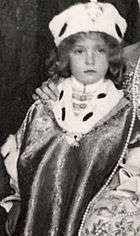
Otto was born at Villa Wartholz in Reichenau an der Rax, Austria-Hungary. He was baptised Franz Joseph Otto Robert Maria Anton Karl Max Heinrich Sixtus Xavier Felix Renatus Ludwig Gaetan Pius Ignatius on 25 November 1912 at Villa Wartholz by the Prince-Archbishop of Vienna, Cardinal Franz Xaver Nagl. His godfather was the Emperor Franz Joseph I of Austria (represented by Archduke Franz Ferdinand of Austria); his godmother was his grandmother Infanta Maria Antonia of Portugal.[13]
In November 1916, Otto became Crown Prince of Austria, Hungary, Bohemia and Croatia[1][2] when his father, Archduke Charles, acceded to the throne. However, in 1918, at the end of the First World War, the monarchies were abolished, the Republics of Austria and Hungary founded instead, and the family was forced into exile in Madeira.[14] Hungary did become a kingdom again, but Charles was never to regain the throne. Instead, Miklós Horthy ruled as regent until 1944, in a kingdom without a king.
Otto spoke German, Hungarian, Croatian, English, Spanish, French and Latin fluently. In later life, he would write some 40 books in German, Hungarian, French and Spanish.[15] His mother made him learn many languages because she believed he one day might rule over many lands.[16][17]
Years in exile
Otto's family spent the subsequent years in Switzerland, and on the Portuguese island of Madeira, where Charles died prematurely in 1922, leaving the 9-year-old Otto pretender to the throne. On his father's deathbed, his mother, Empress Dowager Zita, told the 9-year-old, "your father is now sleeping the eternal sleep—you are now Emperor and King".[18] The family eventually relocated to the Basque town of Lekeitio, where 40 Spanish grandees bought them a villa. Meanwhile, the Austrian parliament had officially expelled the Habsburg dynasty and confiscated all the official property (Habsburg Law of 3 April 1919).
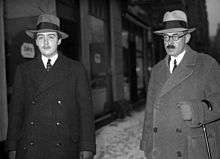
In 1935, he graduated with a PhD degree in Political and Social Sciences from the University of Louvain in Belgium. His thesis was on "the right, born of usage and of the peasant law of inheritance, of the indivisibility of rural land ownership in Austria".[19][20] From his father's death throughout the remainder of his time in exile, Otto considered himself the rightful emperor of Austria and stated this on many occasions. In 1937 he wrote,[21]
I know very well that the overwhelming majority of the Austrian population would like me to assume the heritage of the peace emperor, my beloved father, rather earlier than later. (...) The [Austrian] people have never cast a vote in favor of the republic. They have remained silent as long as they were exhausted from the long fight, and taken by surprise by the audacity of the revolutionaries of 1918 and 1919. They shook off their resignation when they realized that the revolution had raped their right to life and freedom. (...) Such trust places a heavy burden on me. I accept it readily. God willing, the hour of reunion between the Duke and the people will arrive soon.
He continued to enjoy considerable public support in Austria; from 1931 to 1938, 1,603 Austrian municipalities named Otto an honorary citizen.[22] John Gunther believed that Zita was less popular among Austrians, however, writing in 1936 that "restoration would be a good deal closer if Otto's return would not mean also the return of his mother—to say nothing of hundreds of assorted and impoverished Habsburg cousins and aunts, who would flock to Vienna like ants to a keg of syrup". A greater obstacle, he wrote, was the opposition of Czechoslovakia and Yugoslavia, which feared that their people might want to rejoin a recreated monarchy.[20]
World War II
Otto denounced Nazism, stating:
I absolutely reject [Nazi] Fascism for Austria ... This un-Austrian movement promises everything to everyone, but really intends the most ruthless subjugation of the Austrian people ... The people of Austria will never tolerate that our beautiful fatherland should become an exploited colony, and that the Austrian should become a man of second category.[20]
He strongly opposed the Anschluss, and in 1938 requested Austrian Chancellor Kurt Schuschnigg to resist Nazi Germany. He supported international intervention[9] and offered to return from exile to take over the reins of government to repel the Nazis.[23] According to Gerald Warner, "Austrian Jews were among the strongest supporters of a Habsburg restoration, since they believed the dynasty would give the nation sufficient resolve to stand up to the Third Reich".[24]
Following the German annexation of Austria, Otto was sentenced to death by the Nazi regime; Rudolf Hess ordered that Otto was to be executed immediately if caught.[3][25] As ordered by Adolf Hitler, his personal property and that of the House of Habsburg were confiscated and not returned after the war.[26] The so-called "Habsburg Law", which had previously been repealed, was reintroduced by the fiercely republican and anti-monarchist Nazis. The leaders of the Austrian legitimist movement, i.e. supporters of Otto, were arrested by the Nazis and largely executed (Stefan Zweig's novella The Royal Game is based on these events). Otto's cousins Max, Duke of Hohenberg, and Prince Ernst of Hohenberg were arrested in Vienna by the Gestapo and sent to Dachau concentration camp where they remained throughout Nazi rule. Otto was involved in helping around 15,000 Austrians,[27] including thousands of Austrian Jews, flee the country at the beginning of the Second World War.[19][28]
After the German invasion of France in 1940, the family left the French capital and fled to Portugal with a visa issued by Aristides de Sousa Mendes, the Portuguese consul in Bordeaux.[29] For his own safety, Otto left the European continent for the United States and lived from 1940 to 1944 in Washington, D.C. In 1941, Hitler personally revoked the citizenship of Otto, his mother and his siblings, and the imperial-royal family found themselves stateless.[30]
During his wartime exile in the United States, Otto and his younger brothers were in direct contact with President Franklin D. Roosevelt and the federal government. His efforts to create an "Austrian Battalion" in the United States Army were delayed and never implemented. However, he successfully convinced the U.S. to halt or limit the bombardment of Austrian cities, especially the capital, Vienna,[27] which were consequently delayed by high-ranking commanding personnel; bombardments on Vienna began later in the war (1943). Otto tried hard to set symbolic steps for the will of Austria and Austrians to be free, independent and democratic; he expressed concern that after the war, Austria was in danger of becoming a Soviet satellite state. Otto was commonly known in the U.S. as "Otto of Austria", trying to keep Austria and its neighbors in the minds of the American people via starting a series of stamps (the Overrun Countries series) containing the German occupied nations of Europe.
He obtained the support of Winston Churchill for a conservative "Danube Federation", in effect a restoration of Austria-Hungary, but Joseph Stalin put an end to these plans.[23] He lobbied for the recognition of an Austrian government-in-exile, for the rights of the German-speaking population of South Tyrol, against the deportation of the German-speaking inhabitants of Bohemia and eastern Europe, and against letting Stalin rule Eastern Europe.[31][32]
After World War II
At the end of the war, Otto returned to Europe and lived for some years in France and Spain.
In 1949, he ennobled several people, granting them Austrian noble titles, although not recognized by the Austrian republic. As he did not possess a passport and was effectively stateless, he was given a passport of the Principality of Monaco, thanks to the intervention of Charles de Gaulle in 1946. As a Knight of Malta, the Order also issued him a diplomatic passport. Later, he was also given a Spanish diplomatic passport.[33]
On 8 May 1956, Otto was recognized as an Austrian citizen by the provincial government of Lower Austria.[34] The Austrian Interior Ministry approved this declaration of Citizenship, but on the condition that he accept the name Dr. Otto Habsburg-Lothringen, on 8 February 1957. But this only entitled him to a passport "valid in every country but Austria".[35] Otto had already submitted a written statement, on 21 February 1958, that he and his family would renounce all privileges formerly entitled a member of the House of Habsburg, but this first declaration did not satisfy the requirements of the Habsburg Law, which stated that Otto and other descendants of Charles could only return to Austria if they renounced all royal claims and accepted the status of private citizens. In 1961, Spanish caudillo Francisco Franco offered to make him king of Spain after his own death, to which Habsburg declined.[36] He officially declared his loyalty to the Republic of Austria on 5 June 1961, but this statement was ruled insufficient as well.
In a declaration dated 31 May 1961, Otto renounced all claims to the Austrian throne and proclaimed himself "a loyal citizen of the republic", a move that he made only after much hesitation and certainly "for purely practical reasons".[37] In a 2007 interview on the occasion of his approaching 95th birthday, Otto stated:
- "This was such an infamy, I'd rather never have signed it. They demanded that I abstain from politics. I would not have dreamed of complying. Once you have tasted the opium of politics, you never get rid of it."[38]
The Austrian administrative court found on 24 May 1963 that Otto's statement was sufficient to meet this requirement. His wife and he were then issued a Certified Proof of Citizenship on 20 July 1965. However, several elements in the country, particularly the Socialists, were ill-disposed to welcoming back the heir of the deposed dynasty. This touched off political infighting and civil unrest that almost precipitated a crisis of state, and later became known as the "Habsburg Crisis." It was only on 1 June 1966, after the People's Party won an outright majority in the national election, that Otto was issued an Austrian passport, and was finally able to visit his home country again on 31 October 1966 for the first time in 48 years. That day, he traveled to Innsbruck to visit the grave of Archduke Eugen of Austria. Later, he visited Vienna on 5 July 1967.[39][40][41][42][43][44]
Political career

An early advocate of a unified Europe, Otto was president of the International Paneuropean Union from 1973 to 2004.[45] He served from 1979 until 1999 as a Member of the European Parliament for the conservative Christian Social Union of Bavaria (CSU) party, eventually becoming the senior member of the European Parliament. He was also a member of the Mont Pelerin Society.[46] He was a major supporter of the expansion of the European Union from the beginning and especially of the acceptance of Hungary, Slovenia and Croatia. During his time in the European Parliament, he was involved in a fracas with fellow MEP Ian Paisley, a unionist Protestant pastor from Northern Ireland. In 1988, Pope John Paul II had just begun a speech to the Parliament when Paisley, a vehement anti-Catholic, shouted that the Pope was the Antichrist, and held up a poster reading "Pope John Paul II Antichrist". Otto snatched Paisley's banner and, along with other MEPs, ejected him from the chamber.[47]
He was one of the men instrumental in organising the so-called Pan-European Picnic at the Hungary-Austria border on 19 August 1989.[5] This event is considered a milestone in the collapse of Communist dictatorships in Europe.[48]
He was reportedly a patron of the Three Faiths Forum, a group which aims to encourage friendship, goodwill and understanding amongst people of the three monotheistic faiths of Christianity, Judaism and Islam in the United Kingdom and elsewhere.
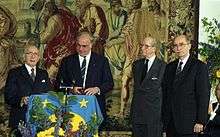
In December 2006, he observed that, "The catastrophe of 11 September 2001 struck the United States more profoundly than any of us, whence a certain mutual incomprehension. Until then, the United States felt itself secure, persuaded of its power to bombard any enemy, without anyone being able to strike back. That sentiment vanished in an instant. Americans understand viscerally for the first time the risks they face."[49] He was known as a supporter of the rights of refugees and displaced people in Europe, notably of the ethnic Germans displaced from Bohemia where he was once the Crown Prince.[50] He was a jury member of the Franz Werfel Human Rights Award.[51] He also held Francisco Franco in a high regard and praised him for helping refugees, stating that he was "a dictator of the South American type, not totalitarian like Hitler or Stalin".[52]
In 2002, he was named the first ever honorary member of the European People's Party group.[53]
On the 2008 anniversary of the Anschluss,[54][55][56][57][58] Otto von Habsburg made a very controversial statement, as part of his "1938 Remembrance Day" address before Parliament that "there is no country in Europe that has a better claim to be a victim of the Nazis than Austria".[59] The context of this statement left little room for the media to interpret it in a better light. Although his speech received an ovation,[60] this received public protest, media criticism and disapproval voiced by Austrian politicians.[61] Social Democratic Party Defence Minister Norbert Darabos was quoted as saying that the remarks were "unacceptable", "a veritable democratic-political scandal" and that he had "insulted the victims of National Socialism". Otto von Habsburg was also quoted as saying that "a discussion as to whether Austria was an accomplice or a victim is an outrage".[62] Austrian People's Party military spokesman Walter Murauer defended Otto's statement at the time.[63] Murauer claimed that there was "another reality behind the mass of people who listened to Hitler on the Heldenplatz". Meaning the "thousands in the resistance and thousands in prison waiting to be transported to Dachau" near Munich. Murauer also recalled that Engelbert Dollfuß had been the only head of government in Europe to have been murdered by the Nazis. Murauer advised Darabos "to avoid populist pot-shots against an honourable European of the highest calibre." Otto's son, Karl von Habsburg, also defended his father's words, in a 2011 statement, stating that "there were guilty parties in practically every country".[64]
Death and funeral

After the death of his wife, Regina in 2010, Otto stopped appearing in public. He died at the age of 98 on Monday, 4 July 2011, at his home in Pöcking, Germany. His spokeswoman reported that he died "peacefully and without pain in his sleep".[5][8]
On 5 July, his body was laid in repose in the Church of St. Ulrich near his home in Pöcking, Bavaria, and a massive 13-day period of mourning started in several countries formerly part of Austria-Hungary.[65] Otto's coffin was draped with the Habsburg flag decorated with the imperial–royal coats of arms of Austria and Hungary in addition to the Habsburg family coat of arms.
In line with the Habsburg family tradition, Otto von Habsburg was buried in the family's crypt in Vienna, while his heart was buried in a monastery in Pannonhalma, Hungary.[8]
Family

He married Princess Regina of Saxe-Meiningen on May 10, 1951 at the Church of Saint-François-des-Cordeliers in Nancy, capital city of Lorraine.[66] The wedding was attended by his mother Empress Zita. He returned there with his wife for their golden jubilee in 2001. At the time of his death, he left seven children, 22 grandchildren and two great-grandchildren:[67]
- Andrea von Habsburg (born 1953). Married Hereditary Count Karl Eugen von Neipperg. They have three sons, two daughters and three grandchildren.
- Monika von Habsburg, born on 13 September 1954. Married Luis María Gonzaga de Casanova-Cárdenas y Barón, Duke of Santangelo, Marquess of Elche, Count of Lodosa and Grandee of Spain, who is a descendant of Infanta Luisa Teresa of Spain, Duchess of Sessa and sister of Francis, King-Consort of Spain.
- Michaela von Habsburg, born on 13 September 1954. Monika's twin sister. Married firstly Eric Alba Teran d'Antin, and secondly Count Hubertus of Kageneck. She has two sons Gabor and Adam from her first marriage. Twice divorced.
- Gabriela von Habsburg, born on 14 October 1956
Married Christian Meister in 1978, divorced in 1997. Has issue. - Walburga von Habsburg, born on 5 October 1958
Married Count Carl Axel Archibald Douglas.[68] - Karl von Habsburg, born on 11 January 1961
Married Baroness Francesca Thyssen-Bornemisza, born on 7 June 1958 Has Issue. - Georg von Habsburg, born on 16 December 1964
Married Duchess Eilika of Oldenburg, born on 22 August 1972 Has Issue.
Otto lived in retirement at the Villa Austria in Pöcking near Starnberg, upon Starnberger See, Upper Bavaria, Bavaria, Germany.
Titles and styles
| Styles of Crown Prince Otto of Austria | |
|---|---|
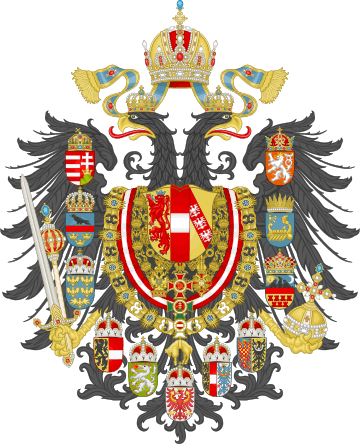 | |
| Reference style | His Imperial and Royal Highness |
| Spoken style | Your Imperial and Royal Highness |
| Alternative style | Sir |
- 20 November 1912 – 21 November 1916: His Imperial and Royal Highness Archduke Otto of Austria, Royal Prince of Hungary, Bohemia, Dalmatia, Croatia and Slavonia[1]
- 21 November 1916 – 4 July 2011: His Imperial and Royal Highness The Crown Prince of Austria, Hungary, Bohemia and Croatia[1][2]
Titles in pretence from 1 April 1922
- By the Grace of God Emperor of Austria; Apostolic King of Hungary, King of Bohemia, Dalmatia, Croatia, Slavonia, Galicia and Lodomeria; King of Jerusalem etc.; Archduke of Austria; Grand Duke of Tuscany and Cracow; Duke of Lorraine, Salzburg, Styria, Carinthia, Carniola and Bukowina; Grand Prince of Transylvania, Margrave of Moravia; Duke of Silesia, Modena, Parma, Piacenza, Guastalla, Auschwitz and Zator, Teschen, Friuli, Dubrovnik and Zadar; Princely Count of Habsburg and Tyrol, of Kyburg, Gorizia and Gradisca; Prince of Trent and Brixen; Margrave of Upper and Lower Lusatia and Istria; Count of Hohenems, Feldkirch, Bregenz, Sonnenburg etc.; Lord of Trieste, Kotor and the Windic March, Grand Voivod of the Voivodeship of Serbia etc. etc.[69]
Official in Austria
- 20 November 1912 – 21 November 1916: His Imperial and Royal Highness Archduke Otto of Austria, Royal Prince of Hungary, Bohemia, Dalmatia, Croatia and Slavonia[1]
- 21 November 1916 – 12 November 1918: His Imperial and Royal Highness The Crown Prince of Austria, Hungary, Bohemia, Dalmatia, Croatia and Slavonia[1][2]
- 12 November 1918 – 1919: Otto Archduke of Austria, Prince Royal of Hungary
- 1919–1941 (citizenship revoked by Adolf Hitler in 1941): Herr Otto Habsburg-Lothringen
- 1941–1965: Otto did not have citizenship in any country, but he had a passport of Monaco from 1946 as His Imperial and Royal Highness Otto von Habsburg, plus a passport of the Order of Malta and a diplomatic passport of Spain under the same name)
- 1965–4 July 2011: Doktor Otto Habsburg-Lothringen
Official in Croatia
- 21 November 1916 – 29 October 1918: His Royal Highness The Crown Prince of Croatia, Dalmatia and Slavonia[1][2]
He became a citizen of the Republic of Croatia in 1990, with the official name:
- 1990 – 4 July 2011: Otto Habsburško-Lotarinški, but since nobility titles are not forbidden by law he is publicly and by the state referred to as Archduke (sometimes Crown prince) Otto von Habsburg[70]
Official in Germany
Otto von Habsburg became a citizen of the Federal Republic of Germany in 1978, and was allowed the official name:
- 1978 – 4 July 2011: Otto von Habsburg
Ancestry
Honours and awards
Governmental orders and awards
-
.svg.png) Bavaria: Bearer of the Bavarian Order of Merit (1978)
Bavaria: Bearer of the Bavarian Order of Merit (1978) -
 Croatia: Grand Cross of the Grand Order of King Dmitar Zvonimir (1995)[70]
Croatia: Grand Cross of the Grand Order of King Dmitar Zvonimir (1995)[70] -
 Estonia: 1st Class of the Order of the Cross of Terra Mariana (1996)
Estonia: 1st Class of the Order of the Cross of Terra Mariana (1996) -
 France: Grand Cross of the Legion of Honour (2009)[71][72]
France: Grand Cross of the Legion of Honour (2009)[71][72] -
 Germany: Grand Cross of the Order of Merit of the Federal Republic of Germany (1987)
Germany: Grand Cross of the Order of Merit of the Federal Republic of Germany (1987) -
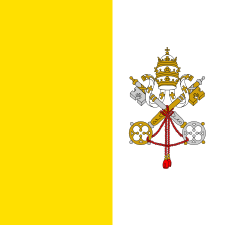 Holy See: Grand Cross of the Order of St. Gregory the Great (1980)
Holy See: Grand Cross of the Order of St. Gregory the Great (1980) -
 Holy See: Grand Cross of the Order of St. Sylvester
Holy See: Grand Cross of the Order of St. Sylvester -
 Hungary: Grand Cross of the Order of Merit of the Republic of Hungary (1999)
Hungary: Grand Cross of the Order of Merit of the Republic of Hungary (1999) -
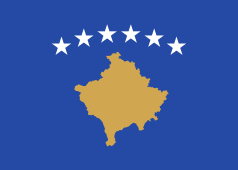 Kosovo: Golden Medal of Liberty
Kosovo: Golden Medal of Liberty -
 Latvia: Commander of the Order of Three Stars
Latvia: Commander of the Order of Three Stars -
 Lithuania: Commander of the Order of the Lithuanian Grand Duke Gediminas
Lithuania: Commander of the Order of the Lithuanian Grand Duke Gediminas -
 Luxembourg: Knight of the Order of the Gold Lion of the House of Nassau
Luxembourg: Knight of the Order of the Gold Lion of the House of Nassau -
 Macedonia: Order of Merit
Macedonia: Order of Merit -
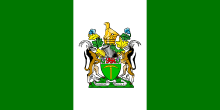 Rhodesia: Grand-Commander of the Legion of Honour
Rhodesia: Grand-Commander of the Legion of Honour -
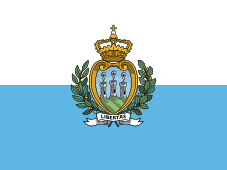 San Marino: Grand Cross of the Order of St. Agatha (2002)
San Marino: Grand Cross of the Order of St. Agatha (2002) -
 Spain: Grand Cross of the Order of Charles III (1951)
Spain: Grand Cross of the Order of Charles III (1951) -
 Spain: Grand Cross of the Order of Africa
Spain: Grand Cross of the Order of Africa -
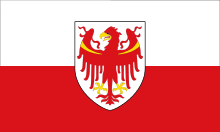 South Tyrol: Recipient of the Grand Order of Merit
South Tyrol: Recipient of the Grand Order of Merit
Habsburg/Austrian orders and awards
- Order of the Golden Fleece (Austrian Branch)
- Grand Cross of the Royal Hungarian Order of Saint Stephen
- Grand Cross of the Imperial Austrian Order of Leopold
- Badge of the Tyrolean Nobility Register
International sovereign organisations
-
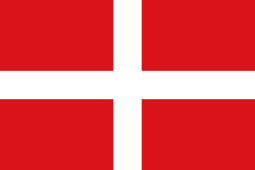 Sovereign Military Order of Malta: Bailiff Grand Cross of Honour and Devotion (1959)[73]
Sovereign Military Order of Malta: Bailiff Grand Cross of Honour and Devotion (1959)[73]
Dynastic orders of knighthood of former sovereign royal families
-
_crowned.svg.png) House of Savoy: Knight of the Order of the Most Holy Annunciation
House of Savoy: Knight of the Order of the Most Holy Annunciation -
.svg.png) House of Wittelsbach: Grand Cross of the Order of Saint Hubert
House of Wittelsbach: Grand Cross of the Order of Saint Hubert -
.svg.png) House of Bourbon-Two Sicilies: Grand Cross of the Order of Saint Januarius
House of Bourbon-Two Sicilies: Grand Cross of the Order of Saint Januarius -
.svg.png) House of Braganza: Knight Grand Cross of the Order of the Immaculate Conception of Vila Viçosa
House of Braganza: Knight Grand Cross of the Order of the Immaculate Conception of Vila Viçosa
Non-governmental awards
-
 Teutonic Knights: Honorary Knight of the Teutonic Order
Teutonic Knights: Honorary Knight of the Teutonic Order -
 Lower Austria: Cross of Honour in Gold of the Chapter of Lilienfeld
Lower Austria: Cross of Honour in Gold of the Chapter of Lilienfeld -
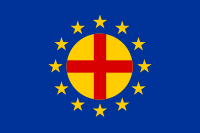 Paneuropean Union: Special Rank of the European Medal of the Paneuropean Union Germany
Paneuropean Union: Special Rank of the European Medal of the Paneuropean Union Germany -
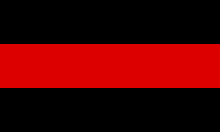 Sudetendeutsche Landsmannschaft: European Charles Price of the Sudetendeutsche Landsmannschaft
Sudetendeutsche Landsmannschaft: European Charles Price of the Sudetendeutsche Landsmannschaft
Academic awards
- Medal of the Académie des Sciences Morales et Politiques, Institut de France, Paris, France
- Medal of the Royal Moroccan Academy, Morocco
- Medal of the Academia da Cultura Portuguesa, Lisbon, Portugal
- Medal of the Real Academia de Ciencias Morales y Políticas, Madrid, Spain
- Honorary Professor of the University of Bogota, Colombia
- Honorary Fellow of the University of Jerusalem, Israel
- Honorary Member of the Instituto de Estudos da Marinha, Portugal
- Honorary Senator of the University of Maribor, Slovenia
- Honorary Doctor of the University of Osijek, Croatia
- Honorary Doctor of the University of Nancy, Lorraine, France
- Honorary Doctor of the University of Turku, Finland
- Honorary Doctor of the University of Budapest, Hungary
- Honorary Doctor of the University of Pécs, Hungary
- Honorary Doctor of the University of Veszprém, Hungary
- Honorary Doctor of the University of Jerusalem, Israel
- Honorary Doctor of the University of Ferrara, Italy
- Honorary Doctor of the University of Skopje, Macedonia
- Honorary Doctor of the University of Cincinnati, Cincinnati, Ohio, USA
- Honorary Doctor of the University of Wisconsin–Milwaukee, Milwaukee, Wisconsin, USA
- Honorary Doctor of the University of Tampa, Tampa, Florida, USA
- Honorary Master in Law and Economics of the IMADEC University, Vienna, Austria
- Accademician of Studium, Accademia di Casale e del Monferrato, Italy
Footnotes
- 1 2 3 4 5 6 7 8 Kaiser Joseph II. harmonische Wahlkapitulation mit allen den vorhergehenden Wahlkapitulationen der vorigen Kaiser und Könige.. Since 1780 official title used for princes (zu Hungarn, Böheim, Dalmatien, Kroatien, Sflavonien, Königlicher Erbprinz)
- 1 2 3 4 5 6 Croatian Coronation Oath of 1916.. P.2-4, 'Emperor of Austria, Hungary and Croatia, Slavonia and Dalmatia Apostolic king'
- 1 2 Dan van der Vat (4 July 2011). "Otto von Habsburg obituary". The Guardian. London. Retrieved 6 July 2011.
- ↑ Otto was born as His Imperial and Royal Highness Archduke Otto of Austria, Royal Prince of Hungary and Bohemia and became the Crown Prince of these countries in 1916. After 1919, titles of nobility were formally abolished in Austria, thus von Habsburg turned into Habsburg. The same applied after Habsburg became a German citizen (see Printausgabe der deutschen Wochenzeitung die Zeit vom 21 July 2011, p.36). By courtesy, he would also be referred to by European courts by his former style and title, i.e. as His Imperial and Royal Highness Archduke Otto of Austria. In the Austrian republic the authorities referred to him from 1919 as Otto Habsburg-Lothringen, a name he never used himself. Otto did not live in Austria after 1918, and his citizenship there was revoked by Adolf Hitler in 1941, making him stateless. His Austrian citizenship was only restored in 1965. Otto later became a citizen of or was issued passports of multiple other countries, where his official name was Otto von Habsburg. As a Member of the European Parliament for Germany, his official name in the European Union was Otto von Habsburg. On his website, he used the style and name His Imperial and Royal Highness Dr. Otto von Habsburg.
- 1 2 3 4 Nicholas Kulish (4 July 2011). "Otto von Hapsburg, a Would-Be Monarch, Dies at 98". The New York Times.
- ↑ "Habsburg: Last heir to Austro-Hungarian empire dies". BBC News. 4 July 2011. Retrieved 5 July 2011.
- ↑ "Die vielen Pflichten des Adels". Wiener Zeitung (in German). 5 July 2011. Retrieved 11 July 2011.
- 1 2 3 Scally, Derek (4 July 2011). "Death of former 'kaiser in exile' and last heir to Austro-Hungarian throne". The Irish Times. Retrieved 5 July 2011.
- 1 2 Kaiser-Sohn Otto von Habsburg gestorben Deutsche Welle, 4 July 2011 (German)
- ↑ Tibor Pásztory. "Die beliebtesten Irrtümer zur Monarchie". Wienerzeitung.at. Retrieved 16 July 2011.
- ↑ "The Budapest Times – Hungary's leading English Language source for daily news". Budapesttimes.hu. 26 November 2007. Retrieved 9 July 2011.
- ↑ "Trauer um Otto von Habsburg". Kathweb.at. Retrieved 8 July 2011.
- ↑ Wiener Zeitung, 26 November 1912.
- ↑ Scally, Derek (5 July 2011). "Death of former 'kaiser in exile' and last heir to Austro-Hungarian throne". The Irish Times. Retrieved 29 September 2011.
- ↑ "Otto von Habsburg, heir to Austria's last emperor, dies at 98". The Local. Retrieved 5 July 2011.
- ↑ "Habsburg Empire: Clown Prince". TIME. 11 March 1940. Retrieved 5 July 2011.
- ↑ Warren, David (10 July 2011). "The Europe that might have been". The Ottawa Citizen. Retrieved 29 September 2011.
- ↑ "Habsburgs Erbe zerfiel und erlebte dennoch eine Renaissance". Diepresse.com. 27 May 2011. Retrieved 8 July 2011.
- 1 2 "Otto Hapsburg, eldest son of Austria's last emperor, dies at 98". Thenational.ae. Retrieved 6 July 2011.
- 1 2 3 Gunther, John (1936). Inside Europe. Harper & Brothers. pp. 321–323.
- ↑ Gedächtnisjahrbuch 1937, 9. Jg.: Dem Andenken an Karls von Österreich Kaiser und König. Arbeitsgemeinschaft österreichischer Vereine – Wien, W. Hamburger 1937
- ↑ Heinz Arnberger, Winfried R. Garscha, Rudolf G. Ardelt, Christa Mitterrutzner, Anschluß 1938, Dokumentationsarchiv des Österreichischen Widerstandes, Österreichischer Bundesverlag, 1988, ISBN 3-215-06824-9
- 1 2 "Archduke Otto von Habsburg". The Daily Telegraph. London. 4 July 2011. Retrieved 6 July 2011.
- ↑ Warner, Gerald (20 November 2008). "Otto von Habsburg's 96th birthday telescopes European history". The Daily Telegraph. London. Retrieved 6 July 2011.
- ↑ Omeidl "Rudolf Hess, der Stellvertreter des Führers, hatte den deutschen Invasionstruppen für das neutrale Belgien den Befehl erteilt, Otto von Habsburg und seine Brüder, falls sie gefasst würden, ohne jedes weitere Verfahren sofort zu erschießen." http://www.omeidl.com/monarch.html
- ↑ Zoch, Irene (22 February 2004). "Habsburgs demand return of estates seized by Nazis in 1938". The Daily Telegraph. London. Retrieved 6 July 2011.
- 1 2 "Otto von Habsburg, oldest son of Austria-Hungary's last emperor, dies at age 98". Newser. Retrieved 6 July 2011.
- ↑ http://www.heraldscotland.com/mobile/comment/obituaries/otto-von-habsburg-1.1110433
- ↑ http://sousamendesfoundation.org/habsburg/
- ↑ Stephan Baier, Eva Demmerle: Otto von Habsburg. Die Biografie. Amalthea, Wien 2002, ISBN 3-85002-486-5, p. 122.
- ↑ Otto of Austria to US President Franklin D. Roosevelt, Febr. 19, 1945
- ↑ "Sie nannten ihn 'Otto von Europa'". Die-tagespost.de. Retrieved 8 July 2011.
- ↑ http://www.kathweb.at/site/nachrichten/database/40510.html
- ↑ Oliver Meidl: Monarch. A Life for Europe – Republican Recognition in Black and Yellow. "Ottos Anwalt verfassten Text vom 21. Februar 1958, in dem es heißt: "Um in meine Heimat zurückkehren zu können, erkläre ich im eigenen Namen und im Namen meiner Gemahlin und meiner minderjährigen Kinder als österreichischer Staatsbürger, die derzeit in Österreich geltenden Gesetze anzuerkennen und mich als getreuer Bürger der Republik zu bekennen." July 2011 http://www.omeidl.com/monarch.html
- ↑ Gedenkdienst Archive Zur Geschichte der „Habsburger-Gesetze“ http://www.gedenkdienst.at/index.php?id=679
- ↑ http://news.yahoo.com/otto-von-habsburg-saw-end-empire-dead-98-144900184.html
- ↑ Brook-Shepherd, pg. 181
- ↑ Die Presse, Unabhängige Tageszeitung für Österreich. 10–11 November 2007. pg. 3 (German online version dated 9 November 2007: . WebCite archive
- ↑ Salzburger Nachrichten 1 June 1963 (German) http://www.omeidl.com/files/habsbg_articlesn63.jpg
- ↑ A Life for Europe:Republican Recognition in Black and Yellow "...Otto von Habsburg am 31. Oktober 1966 nach Österreich ein und besuchte in Innsbruck das Grab von Erzherzog Eugen." http://www.omeidl.com/monarch.html
- ↑ E. Feigl, Otto von Habsburg, Profil eines Lebens, 1992 ISBN 3-85002-327-3
- ↑ Austria-Online-Lexicon (German) http://www.austria-lexikon.at/af/Wissenssammlungen/Biographien/Habsburg,_Otto
- ↑ Austria Presse Agentur with backing from ÖRF (press archive, 1955–1985) (German) http://www.historisch.apa.at/cms/apa-historisch/dossier.html?dossierID=AHD_19580221_AHD0001
- ↑ "PK-Nr. 743/2006". Parlament.gv.at. Retrieved 5 July 2011.
- ↑ Thomas Wilhelm Schwarzer. "Erzherzog Dr. Otto von Habsburg". Otto.twschwarzer.de. Retrieved 5 May 2010.
- ↑ Peterson, David (1999). Revoking the moral order: the ideology of positivism and the Vienna circle. Lexington Books. p. 122.
- ↑ "Death of former 'kaiser in exile' and last heir to Austro-Hungarian throne". The Irish Times. 5 July 2011. Retrieved 16 August 2015.
- ↑ Barta, Györgyi (2005). Hunagrian spaces and places:patterns of transition. Hungarian Academy of Sciences. p. 2. ISBN 963-9052-46-9.
- ↑ Lalanne, Dorothée (6 December 2006). "Otto de Habsbourg: Européen Avant Tout". Point de Vue (3046): 46.
- ↑ "Zemřel syn posledního rakouského císaře Otto von Habsburg – ČeskéNoviny.cz". Ceskenoviny.cz. 4 July 2011. Retrieved 9 July 2011.
- ↑ "Zentrum gegen Vertreibungen". Z-g-v.de. Retrieved 8 July 2011.
- ↑ "Otto von Habsburg who saw end of empire dead at 98". Forbes. Retrieved 5 July 2011.
- ↑ "Otto von Habsburg – first honorary member of the EPP-ED Group". Eppgroup.eu. Retrieved 8 July 2011.
- ↑ Südtirol Online, 4 July 2011 "Was eigentlich ein Skandal war, nämlich die Diskussion hier in Österreich über die Frage, ob Österreich ein Mitschuldiger war oder ob es ein Opfer war. Meine Damen und Herren, ich glaube es gibt keinen Staat in Europa, der mehr Recht hat, sich als Opfer zu bezeichnen, als es Österreich gewesen ist.“ http://www.stol.it/Artikel/Politik-im-Ueberblick/Politik/Otto-von-Habsburg-ist-tot
- ↑ Süddeutsche Zeitung, 12 March 2008 (German) http://www.sueddeutsche.de/politik/oesterreichs-anschluss-an-nazi-deutschland-habsburg-holt-opferthese-aus-der-mottenkiste-1.282308
- ↑ Kurier, Wien, July 8, 2011 (German)...es gebe "keinen Staat in Europa, der mehr Recht hat, sich als Opfer zu bezeichnen, als es Österreich gewesen ist". http://kurier.at/nachrichten/3921065.php
- ↑ Süddeutsche Zeitung, 9 April 2008 (German) http://www.sueddeutsche.de/politik/kz-kommandant-goeth-morden-bereichern-intrigieren-1.195309
- ↑ Focus Online, 4 July 2011 (German) http://www.focus.de/panorama/vermischtes/otto-von-habsburg-das-bewegte-leben-des-otto-von-europa_aid_642777.html
- ↑ "70 Jahre AnschlussHabsburg plädiert für Opferrolle Österreichs". Archived from the original on 14 March 2008. Retrieved 2008-03-14. Ö1 Inforadio 03/10/2008 (German) "Was eigentlich ein Skandal war, nämlich die Diskussion hier in Österreich über die Frage, ob Österreich ein Mitschuldiger war oder ob es ein Opfer war. Meine Damen und Herren, ich glaube es gibt keinen Staat in Europa, der mehr Recht hat sich als Opfer zu bezeichnen, als es Österreich gewesen ist."
- ↑ ÖRF Online (German) http://sciencev1.orf.at/uhl/151021.html
- ↑ N-TV, 12 March 2008 (German) http://www.n-tv.de/politik/dossier/Oesterreich-arbeitet-auf-article255663.html
- ↑ Tiroler Tageszeitung, 9 July 2011(German) http://www.tt.com/csp/cms/sites/tt/Nachrichten/3029285-2/karl-habsburg-verteidigt-v%C3%A4terliche-aussage-%C3%BCber-opferrolle.csp
- ↑ Austrian Times, 11 March 2008 (English) Habsburg Claims Austria Was Victim http://austriantimes.at/?c=1&id=4010-newentry
- ↑ Der Standard, 9 July 2011 (German) "Mitschuldige gab es praktisch in jedem Land" http://derstandard.at/1308680832243/Karl-Habsburg-verteidigt-revisionistische-Aussagen-seines-Vaters
- ↑ "Thirteen days of commemoration for Otto von Habsburg begins". Monsters and Critics. Retrieved 6 July 2011.
- ↑ https://www.youtube.com/watch?v=xkgUY2nestw
- ↑ Kulish, Nicholas (4 July 2011). "Otto von Hapsburg, a Would-Be Monarch, Dies at 98". The New York Times. Retrieved 17 Sep 2014.
- ↑ Full name
- ↑ Francois R. Velde. "Royal Styles". Heraldica.org. Retrieved 6 July 2011.
- 1 2 "Odluka kojom se odlikuju za izniman doprinos" (in Croatian). Narodne novine. 7 July 1995. Retrieved 2008-07-12. (Official decree and list of persons awarded by the President of Croatia with the Grand Order of King Zvonimir, no.6. 'Archduke Otto von Habsburg'
- ↑ "Décès d'Otto de Habsbourg" (in French). Retrieved 7 July 2011.
- ↑ "Otto Habsbourg s'est éteint à 98 ans" (in French). France 3. Retrieved 7 July 2011.
- ↑ The Grand Master of the Order of Malta at the funeral of Otto von Habsburg
Bibliography
- Gordon Brook-Shepherd, Uncrowned Emperor – The Life and Times of Otto von Habsburg, Hambledon Continuum, London 2003. ISBN 1-85285-549-5.
- Flavia Foradini, "Otto d'Asburgo. L'ultimo atto di una dinastia", mgs press, Trieste, 2004. ISBN 88-89219-04-1
- Stefan Haderer, Otto von Habsburg (1912-2011) - The Life of an Uncrowned Emperor, Royalty Digest Quarterly, Vol. 3/2011, Rosvall Royal Books, Falköping 2011
- Stefan Haderer, An Imperial Farewell - Funeral Ceremonies of Otto von Habsburg, Royalty Digest Quarterly, Vol. 4/2011, Rosvall Royal Books, Falköping 2011
External links
| Wikimedia Commons has media related to Otto von Habsburg-Lothringen. |
- Otto von Habsburg Obituary – The Independent (London, UK) 2011 By Martin Childs
- Erzherzog Dr. Otto von Habsburg (Autorisierte Ehrenseite)
- Video interview of Otto von Habsbourg (French) European Navigator
- The Black & Yellow Alliance
- Appearances on C-SPAN (Otto Von Habsburg)
- Appearances on C-SPAN (Otto Habsburg)
- Archduke Otto von Habsburg, Crown Prince of Hungary, SAST REPORT
- The Mises I Knew on YouTube Audio of Otto von Habsburg's English-language talk at Ludwig von Mises Institute's "Manifesto of Liberty" Summit, February 1999.
- Uncrowned emperor: the life and times of Otto von Habsburg By Gordon Brook-Shepherd
- Archduke Otto Von Habsburg and American Hungarian Emigres during and after World War II, by Steven Bela Vardy
- Archduchess Regina von Habsburg – Daily Telegraph obituary
- Genealogics
- Obituary of Archduke Otto * Otto von Habsburg, The Daily Telegraph, 4 July 2011
- Official website covering the death and funeral of Otto von Habsburg
- Otto von Habsburg (The Economist)
| Otto von Habsburg Cadet branch of the House of Lorraine Born: 20 November 1912 Died: 4 July 2011 | ||
| Titles in pretence | ||
|---|---|---|
| Preceded by Emperor-King Charles |
— TITULAR — Emperor of Austria, King of Hungary, Bohemia, Croatia etc 1 April 1922 – 4 July 2011 Reason for succession failure: Austro-Hungarian Empire abolished in 1918 |
Succeeded by Karl von Habsburg |
| Political offices | ||
| Preceded by Richard Nikolaus von Coudenhove-Kalergi |
International President of the Paneuropean Union 1973 – 2004 |
Succeeded by Alain Terrenoire |